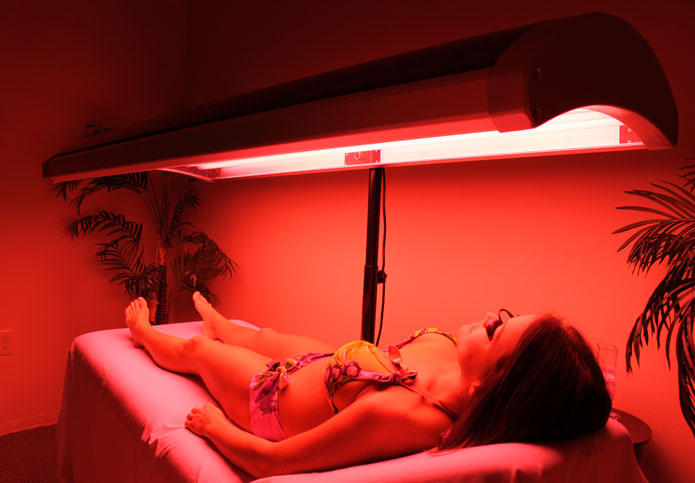With light therapy against seasonal depression and skin diseases
The ancient Greeks knew about the power of the sun, for it was already over 2,000 years ago, a so-called Heliotherapy for the treatment of physical ailments. And even today, light is used for the therapeutic treatment of various diseases.
 Very different light variants in principle be used in the treatment method commonly known as “light therapy”, from the artificial light sources used for this purpose usually only use a small portion of the light radiated by the sun light spectrum. In addition to the red light in the field of heat therapy and blue light for the treatment of neonatal jaundice, for example, especially ultraviolet light and so-called white light plays a role for therapeutic purposes.
Very different light variants in principle be used in the treatment method commonly known as “light therapy”, from the artificial light sources used for this purpose usually only use a small portion of the light radiated by the sun light spectrum. In addition to the red light in the field of heat therapy and blue light for the treatment of neonatal jaundice, for example, especially ultraviolet light and so-called white light plays a role for therapeutic purposes.
UV rays relieve skin diseases.
Especially in the treatment of psoriasis, eczema, itching and sun allergy are forms of therapy with a pure UV-A or UV-B radiation and a combination of both types of radiation have been proven. In severe cases, the radiation can also through the gift of so-called psoralens, which make the skin before the start of radiation still sensitive to light, are supported. In addition, UV light is among other things used in the treatment of vitamin D deficiency and its consequences. However, it must not be forgotten that high doses of UV radiation also has disadvantages because it can damage the skin cells and the genetic material of these cells. Consequences can be not only premature skin aging and pigmentation problems, but possibly also the formation of a malignant skin tumor. Therefore, treatment with UV radiation should only be ordered by a dermatologist.
With white light to improve the biorhythm.
Therapy with white light is normally used for the treatment of depressive disorders or seasonal depression. But even with shift work, jet lag, Alzheimer’s, and light, nonseasonal depression can help restore the body clock and thus the biorhythm who falls through time shifts or short winter days off balance light therapy. Especially in the winter, when the days are short, the human body produces increased melatonin, a hormone that is supposed to promote sleep, but during the day in winter makes for fatigue, lethargy, and for thinking and concentration problems. On the other hand helps daylight, which is produced by artificial, very bright light sources between 2,500 and 10,000 lux at the light therapy, which is about a bright spring day. The treatment itself should preferably take place in the morning, since light inhibits the production of melatonin and simultaneously raises the levels of serotonin, a substance which provides inter alia for well-being and vigor.
Whether at breakfast or during the morning newspaper reading, the pleasant and in principle free from side effects of light therapy is not bound to any environment and can also easily be done at home. However, should be used without UV radiation as light sources only devices. In addition, patients who suffer from eye diseases or taking certain medications such as psychotropic drugs and preparations containing lithium, consult a doctor before treatment.